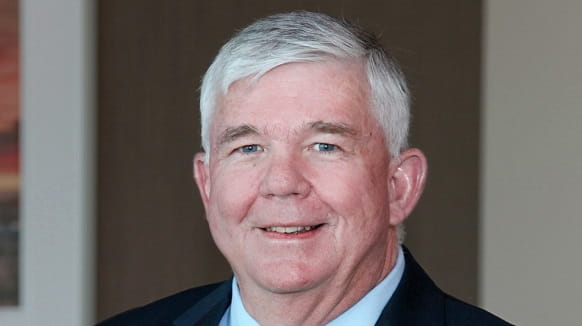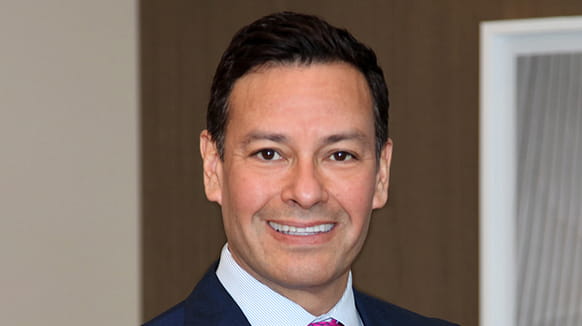Over the past 15 years, the Texas Supreme Court has had several occasions to address the circumstances under which extrinsic documents may be incorporated by reference and considered in evaluating coverage under an insurance policy. In the 2008 decision in Evanston Ins. Co. v. ATOFINA Petrochemicals, Inc., the Court evaluated the additional insured coverage available to a refinery owner for underlying claims asserted by a contractor’s employee based on the terms of the umbrella policy itself, as opposed to the service contract between the refinery and the contractor.1
In the Deepwater Horizon case from 2015, the Court ruled that policies issued to offshore rig owner Transocean did justify examination of Transocean’s drilling contract with BP to determine BP’s status as additional insured.2 And in the process, the Court articulated its standard for incorporation-by-reference into an insurance policy: (1) “we determine the scope of coverage from the language employed in the insurance policy, and if the policy directs us elsewhere, we will refer to an incorporated document to the extent required by the policy”; and (2) “[u]nless obligated to do so by the terms of the policy, however, we do not consider coverage limitations in underlying transactional documents.”3
Four years later in 2019, the Court in ExxonMobil Corporation v. Insurance Company of the State of Pennsylvania, applied the same principles to rule that an extrinsic vendor contract must be consulted to determine whether ExxonMobil benefitted from a blanket waiver of subrogation in a workers compensation policy,4 but the policy’s terms did not further incorporate limitations on the waiver.5
Now, in a companion case involving the same underlying personal injury litigation at issue in the above-referenced subrogation waiver case, the Texas Supreme Court has further refined its incorporation-by-reference doctrine for insurance policies. In ExxonMobil Corporation v. National Union Fire Insurance Company of Pittsburgh, Pa., an oil and gas company, ExxonMobil, sought coverage as an additional insured from umbrella liability insurer, National Union, for underlying settlements with two contractor employees injured in a refinery accident.6 Despite the fact that the umbrella policy follows the form of an underlying primary policy that paid its limits on behalf of ExxonMobil, National Union refused indemnity for the settlements by asserting that terms in Exxon’s agreement with contractor, Savage, avoided any additional insured coverage under the umbrella policy.7 After a summary judgment ruling in favor of ExxonMobil in the trial court, which was reversed by the Houston Court of Appeals,8 the Texas Supreme Court reiterated the following key principles governing incorporation-by-reference into an insurance policy:
- “The policy is the contract; and if outside papers are to be imported into it, this must be done in so clear a manner as to leave no doubt of the intention of the parties.” 2023 Tex. LEXIS 316, at *5 (quoting Goddard v. E. Tex. Fire Ins. Co., 67 Tex. 69, 1 S.W. 906, 907 (Tex. 1886)).
- "Texas law has long provided that a separate contract can be incorporated into an insurance policy by an explicit reference clearly indicating the parties' intention to include that contract as part of their agreement.” Id. (quoting Urrutia v. Decker, 992 S.W.2d 440, 442 (Tex. 1999)).
- “Together, these and other cases reflect three basic principles for interpreting the meaning of an insurance policy: we begin with the text of the policy at issue; we refer to extrinsic documents only if that policy clearly requires doing so; and we refer to such extrinsic documents only to the extent of the incorporation and no further. Any venture beyond the four corners of an insurance policy must be carefully limited to the scope of that policy’s clearly authorized reference.” Id. at *6.
In short, the Court’s “clear manifestation” doctrine is rooted in the maxim that “courts must enforce but not expand the parties’ agreement.” 2023 Tex. LEXIS 316, at *1. Applying these principles, the Court reasoned that (1) the umbrella policy’s coverage for “any person or organization” … “included as an additional insured under Scheduled Underlying Insurance” did incorporate the primary policy, which unquestionably insured Exxon, for the limited purpose of identifying who is an insured;9 (2) the umbrella policy’s disclaimer of “broader coverage” than allowed by the primary policy did not invite resort to the Savage agreement,10 nor did the Savage agreement limit ExxonMobil’s coverage in the manner argued by National Union.11 Accordingly, the Court found ExxonMobil to be an “insured” under National Union’s umbrella policy.12
In the wake of recurring disputes over incorporation by reference, the Insurance Services Office (ISO) has issued form endorsements with explicit language tying the scope of additional insured coverage to extrinsic agreements. See, e.g., CG 20 37 04 13. But for those policyholders and contractual counter-parties, who intend additional insured coverage to be determined from the four corners of the insurance policy, care should be taken to avoid language that may import limitations on coverage from other extrinsic documents.
If you have any questions about incorporation-by-reference into an insurance policy or about insurance recovery in general, please contact one of Haynes Boone’s Insurance Recovery Practice Group partners listed below.
2 In re Deepwater Horizon, 470 S.W.3d 452, 455-456 (Tex. 2015) (“[W]e hold that (1) the Transocean insurance policies include language that necessitates consulting the drilling contract to determine BP’s status as an ‘additional insured’; (2) under the terms of the drilling contract, BP’s status as an additional insured is inextricably intertwined with limitations on the extent of coverage to be afforded under the Transocean policies; (3) the only reasonable construction of the drilling contract’s additional-insured provision is that BP’s status as an additional insured is limited to the liabilities Transocean assumed in the drilling contract; and (4) BP is not entitled to coverage under the Transocean insurance policies for damages arising from subsurface pollution because BP, not Transocean, assumed liability for such claims.”).
3 Id. at 461.
4 Exxon Mobil Corp. v. Ins. Co. of the State of Pa., 568 S.W.3d 650, 658 (Tex. 2019) (“In two places, the standard-form blanket waiver expressly limits the waiver’s applicability by reference to the named insured’s extrinsic contract obligations. First, the Carrier agreed to waive subrogation rights ‘against the person or organization named in the Schedule’ and the Schedule, in turn, makes the subrogation waiver operative as to ‘any person or organization for whom [Savage] has agreed by written contract to furnish this waiver.’ Second, even as to a person or entity named in the Schedule, the waiver is operative ‘only with respect to bodily injury arising out of the operations described in the Schedule [i.e., All Texas Operations] where [Savage is] required by a written contract to obtain this waiver from [the Carrier].’ The endorsement language thus plainly states that a contract other than the policy determines the waiver’s applicability.’”).
5 Id. at 661 (“The standard-form subrogation-waiver endorsement refers to an extrinsic contract to identify who may claim its benefits and as to what operations, but unlike Deepwater Horizon and Ken Petroleum, does not incorporate by reference any other limiting circumstances extrinsic to the policy. Mere reference to a contractual obligation to provide the waiver does not import extrinsic limits on the waiver’s application.”).
6 Exxonmobil Corp. v. Nat’l Union Fire Ins. Co., 2023 Tex. LEXIS 316, at *3 (Tex. April 14, 2023) (“As we recounted in ExxonMobil, 568 S.W.3d at 652-54, the eventual payout dispute between these parties (and others) arose from a workplace accident at Exxon’s Baytown refinery in which two Savage employees were severely burned. The employees sought compensation for their injuries and later settled with Exxon for a collective amount exceeding $24 million. About $5 million of that settlement money came from some of Savage’s primary-insurance policies under which Exxon was recognized as an ‘additional insured,’ including the primary policy underwritten by National Union, which was exhausted to its limits. Exxon paid the rest of the settlement money out of pocket because National Union and Starr both denied Exxon coverage under their umbrella policies.”).
7 Id.
8 Id. at *4.
9 Id. at *7.
10 Id. at *8 (“[T]he umbrella policy does not say anything at all, even by reference, about the service agreement’s payout limits, much less with the clarity that our cases would require for incorporation.”).
11 Id. at *8-9 (“[T]o the extent that we could read the umbrella policy to reference the service agreement in this way, we find no limits in it that the umbrella policy could adopt. The service agreement provides for a minimum amount of insurance, not a maximum.”).
12 Id. at *11.









